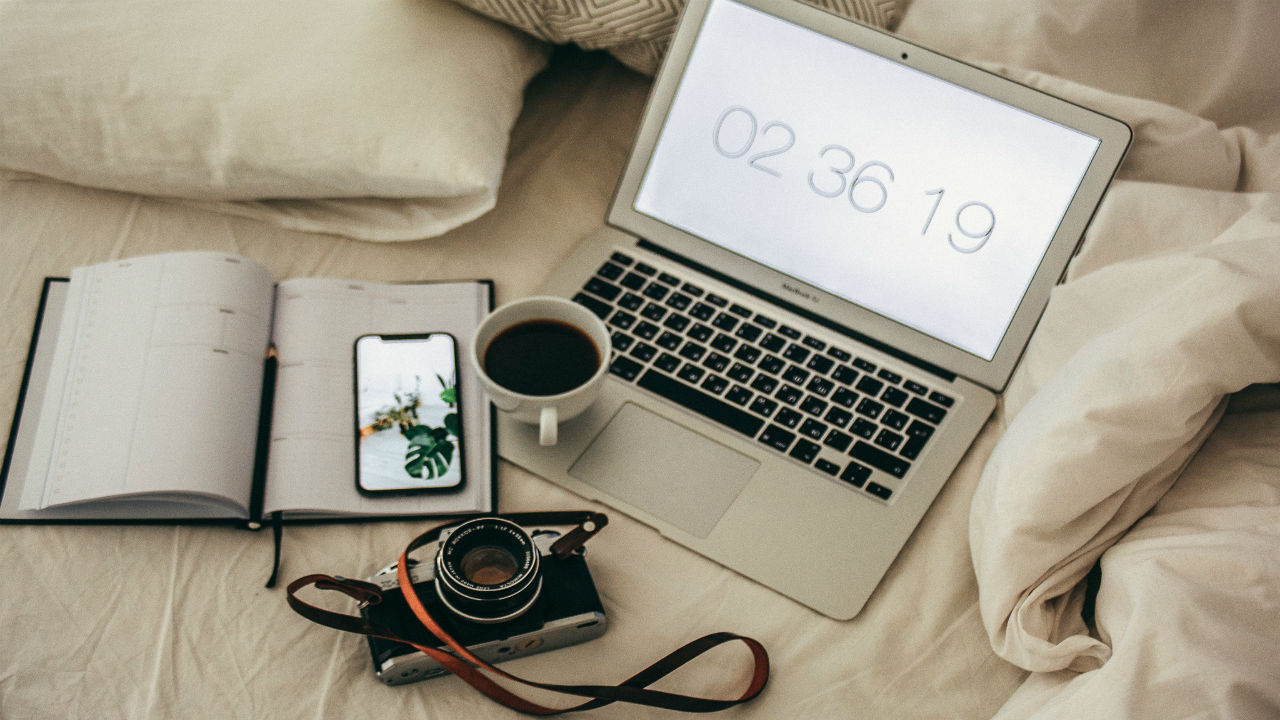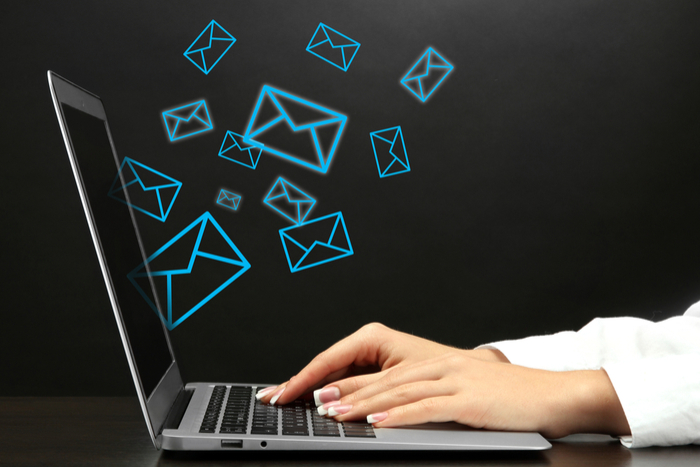How To
These are the best apps and online tools to stay focused and be more productive

- October 18, 2018
- Updated: March 7, 2024 at 5:42 PM

Staying focused in a constant struggle. We all deal with a million emails and sound privacy is at an all-time low.
It’s no wonder many of us feel that our days can spiral out of control. When that happens, we often trick ourselves working on low-priority tasks or worse, wasting time watching YouTube videos and shopping online.
So, how do you regain control and start getting more done? It’s not an easy question to answer. But, below, we’ll look at some productivity tips you can pick, choose, and adjust to your liking.
How to focus
Set the scene for quality work

Our workplaces dictate our ability to produce quality work. When you try to get things done in a noisy, cluttered location, the results can be, well, frustrating.
A few ways you can set the tone for success:
Identify where you lose the most time
We all have our go-to sources of distractions.
Be it reading a certain blog or cruising social media, or scrolling through your phone’s newsfeed, you need to identify the sources that keep you from accomplishing tasks.
Start by trying to change one of your worst time management habits. Allow yourself to check social media during lunchtime—maybe that’s your boundary. Implementing a small change toward better self-control will likely help you make more changes.
If this is harder than anticipated, add a distraction-blocking app. Self-Control, Anti-Social, and Freedom are all great options.
Organize your workstation
Too much stuff in the way can be a really big distraction. Staying focused at work means both mind and physical space need some clarity—a little breathing room if you will.

5 best apps to get organized
Read Now ►Throw away the old coffee cups and wrappers and just stick to what you need. Think—computer, a good pen, your favorite notepad. Everything else should be put into drawers or filed accordingly.
The second part of this is organizing your computer space, as well. Set up shortcuts for all programs you use on a regular basis.
Clean up your inbox

Chance are, you spend a lot of time inside your inbox. While inbox zero is a noble goal, it’s not always possible—or worth chasing. Still, it’s a good idea to apply labels and folders so items are easy to find and out of the way.
Set boundaries
This is a tough one for a lot of people. Clients, bosses, and friends and family can pile extra to-dos on you that hinder your productivity.
It’s important to get better at communicating when you are busy—and say no to things that are bound to stress you out.
If you’re a procrastinator
Procrastination is the worst. Some of us are chronic procrastinators, forever struggling with deadlines, while others need a little more in the way of accountability.
To combat your worst habit, here are some suggestions that will help you get ahead of all those looming to-dos.
Find someone to keep you accountable

An accountability partner can be a real gift to the chronic procrastinator. This could be a colleague, friend, or manager, but this person’s role is to check in to make sure you’re hitting the milestones needed to complete your project.
Some procrastinators find that implementing a system of rewards or punishments can motivate them to stick to deadlines.
If you’re self-employed, accountability partners can come in the form of other freelancers, or through an app like Forest, which works like a modern Pomodoro approach.
With Forest, there’s a group mode—both parties avoid looking at their phone to grow a digital forest. If one. Party slips up, both lose their progress.
To-do lists
To-do lists are one of the most basic elements of managing tasks. As old as time, these low-tech lists hold you accountable and can help you remember everything on your list.
To-do list tips
Make your to-do list entries short, realistic, and specific. A list that never ends is just going to stress you out.
So, make lists that include a doable amount of tasks for the day—things like “email new client about an upcoming project” or “edit presentation content” work better than vague items like “finish project.”
At the end of each day, write down 5-10 items for the next day. This will help you start the new day with a clear sense of what to do.
Some people like keeping lists on paper and enjoy the satisfaction of crossing off each item when they complete a task. Others like organizing their thoughts digitally.
Apps that keep track of everything for you
Stop multi-tasking
Here’s the thing. All of us like to say we’re great at multitasking. In fact, we’ve probably listed this quality on many a job application.
Almost no one is actually good at multitasking. Each time we shift between tasks, our brains need a bit of time to adjust to the new task. As such, you’re losing time when you work all over the place.
Because today’s culture expects us to change focus—answering emails and texts to reading and solving problems, it’s hard to get high-quality work done.
So if you’re working on an article or a report, do that one task and see it through, from start to finish. Set little goals for yourself to avoid temptation. Eat lunch after you’ve completed your report, check email when you’ve edited your article, and so on.
Beyond that, here are a few things you can implement for better time management.
How to manage your time
Schedule times for email

Unfortunately, most of us don’t feel that we have the luxury to check email once a day. Our recommendation is scheduling 2-3 times that you answer everything in the inbox.
Check in at the beginning of the day, again around lunchtime, and finally one last time before you wrap things up. It sounds simple, but every time you check in to respond to one email at a time, you’re losing time.
Try using the Pomodoro Technique
Alright, this might be some of the most basic advice you’ll get for being productive, but there’s a reason Pomodoro persists. Pomodoro was developed in the 1980s as a way to break work into short intervals separated by short breaks. The method works like this:
- Select a task
- Set a timer for 25 minutes
- Work on only the task you’ve selected
- When the timer goes off take a short break—just a few minutes to stretch or grab a coffee
- Every four cycles, take a slightly longer break. About 15-30 minutes.
Pretty simple, right?
The idea is you’ll tackle goals in sprints and recharge with multiple short breaks. You can, of course, make the intervals longer or shorter depending on your need.
The original method relied on an egg timer, but there are several apps out there that can help you set up “pomodoros,” too.
Some suggestions:
Track where you are spending your time

We mentioned above that you should identify bad habits. We’ll double down here and mention that you should figure out how exactly you’re using your time. This will help you identify your most productive times and where you’re losing hours.
Download an app called Rescue Time, it’s a tool that helps you understand your daily habits so you can become more productive.
Final thoughts
Whether you’re working in an office or from home, the day is bound to throw its share of distractions at you no matter how well you plan.
The good news is, you can take charge of your productivity by identifying problem areas and incorporating the tools you need to tackle them.
And practice makes perfect. Like anything else, productivity is a muscle you need to work out to see results. Learn more about your habits—and optimize accordingly.
Grace is a painter turned freelance writer who specializes in blogging, content strategy, and sales copy. She primarily lends her skills to SaaS, tech, and digital marketing companies.
Latest from Grace Sweeney
You may also like

Bluesky presents three levels of account verification
Read more

The FBI warns about the increase in scams targeting vulnerable victims
Read more

Be careful if you use certain mods in Helldivers 2: they could get your account banned
Read more

Nothing presents its new super cheap smartphone under the CMF brand
Read more

AI-based audio workflows in Audition: Revolutionizing sound editing
Read more

The hidden challenges of Skyrim keep players hooked a decade later
Read more







